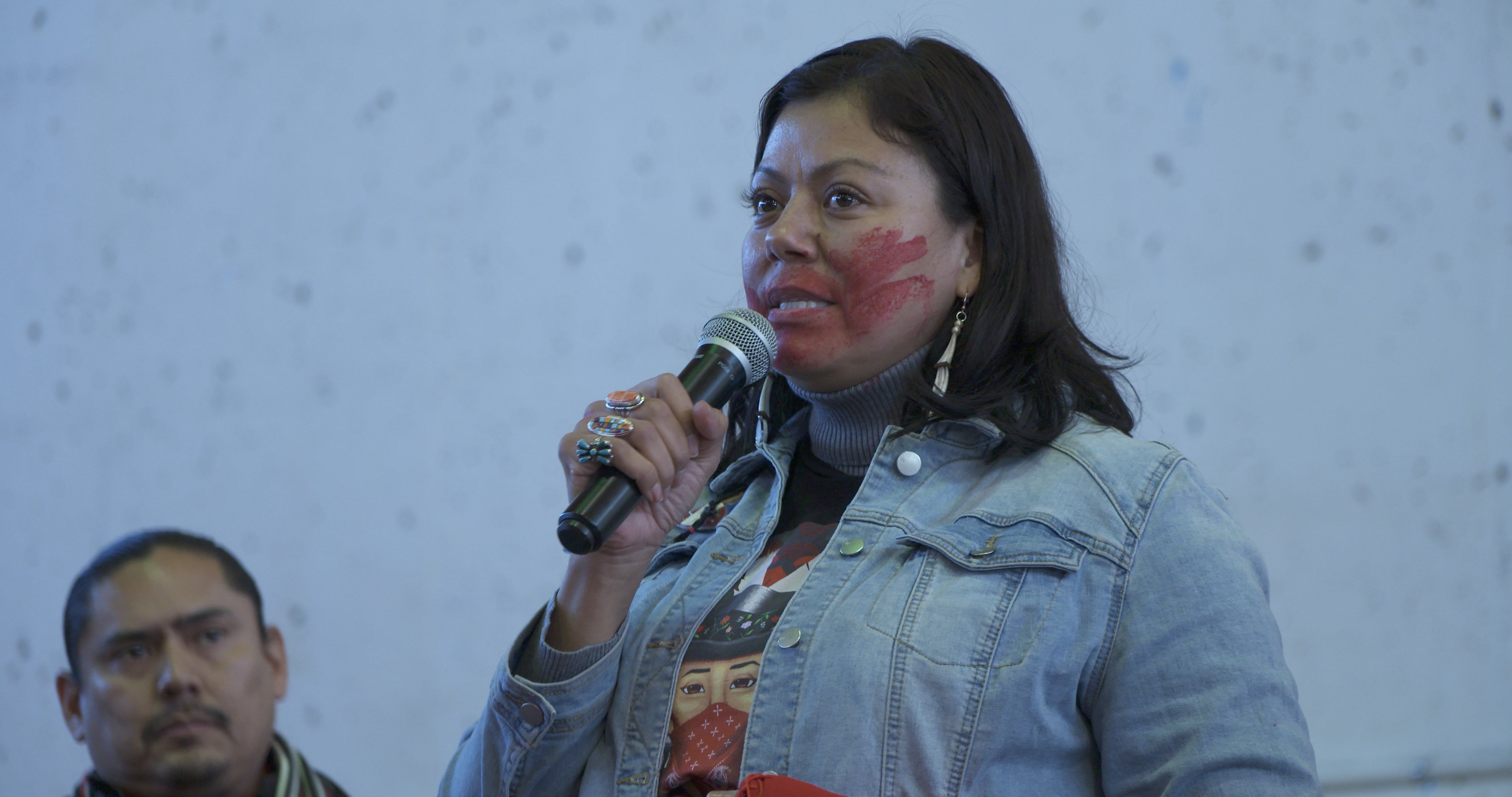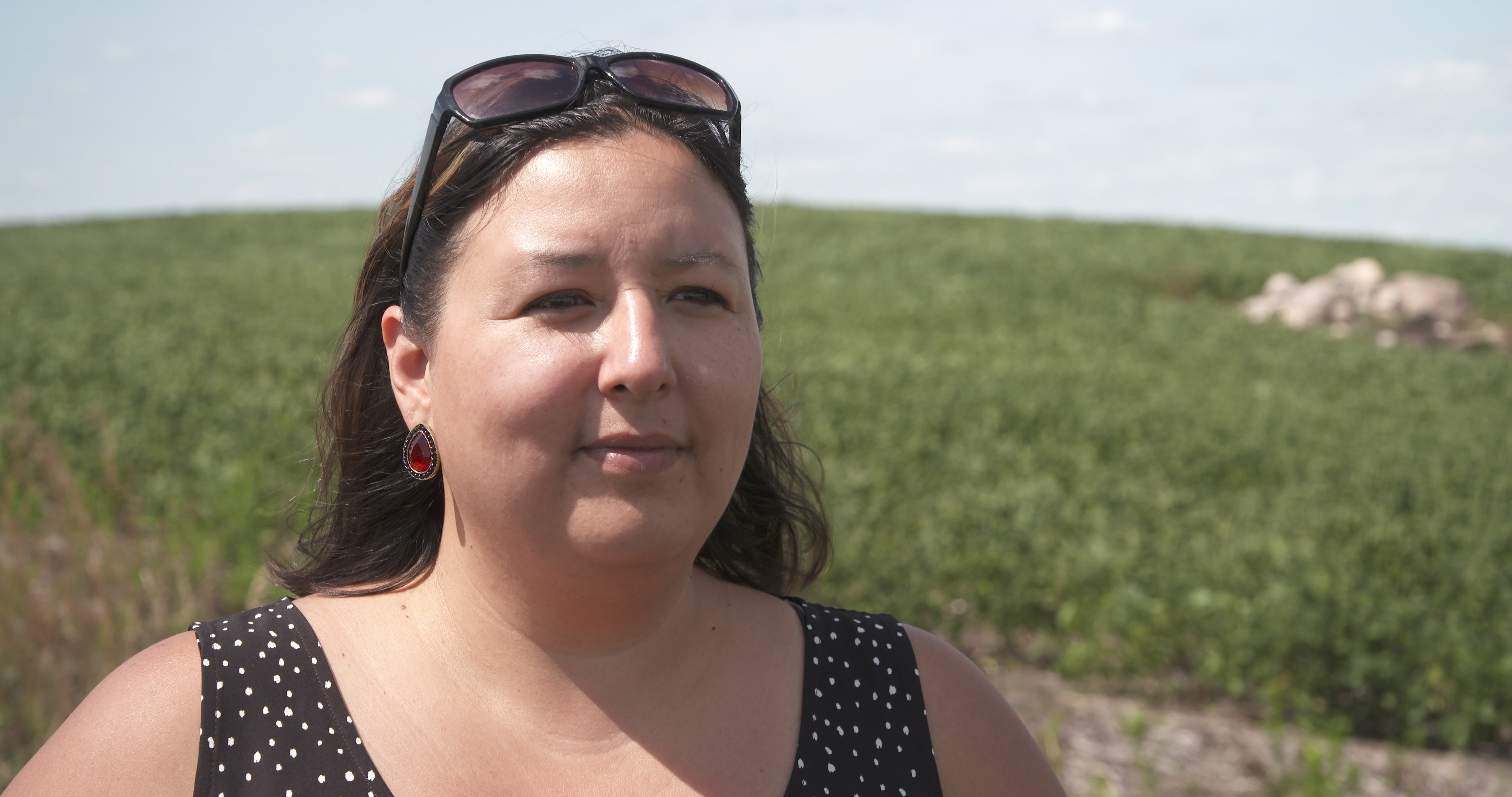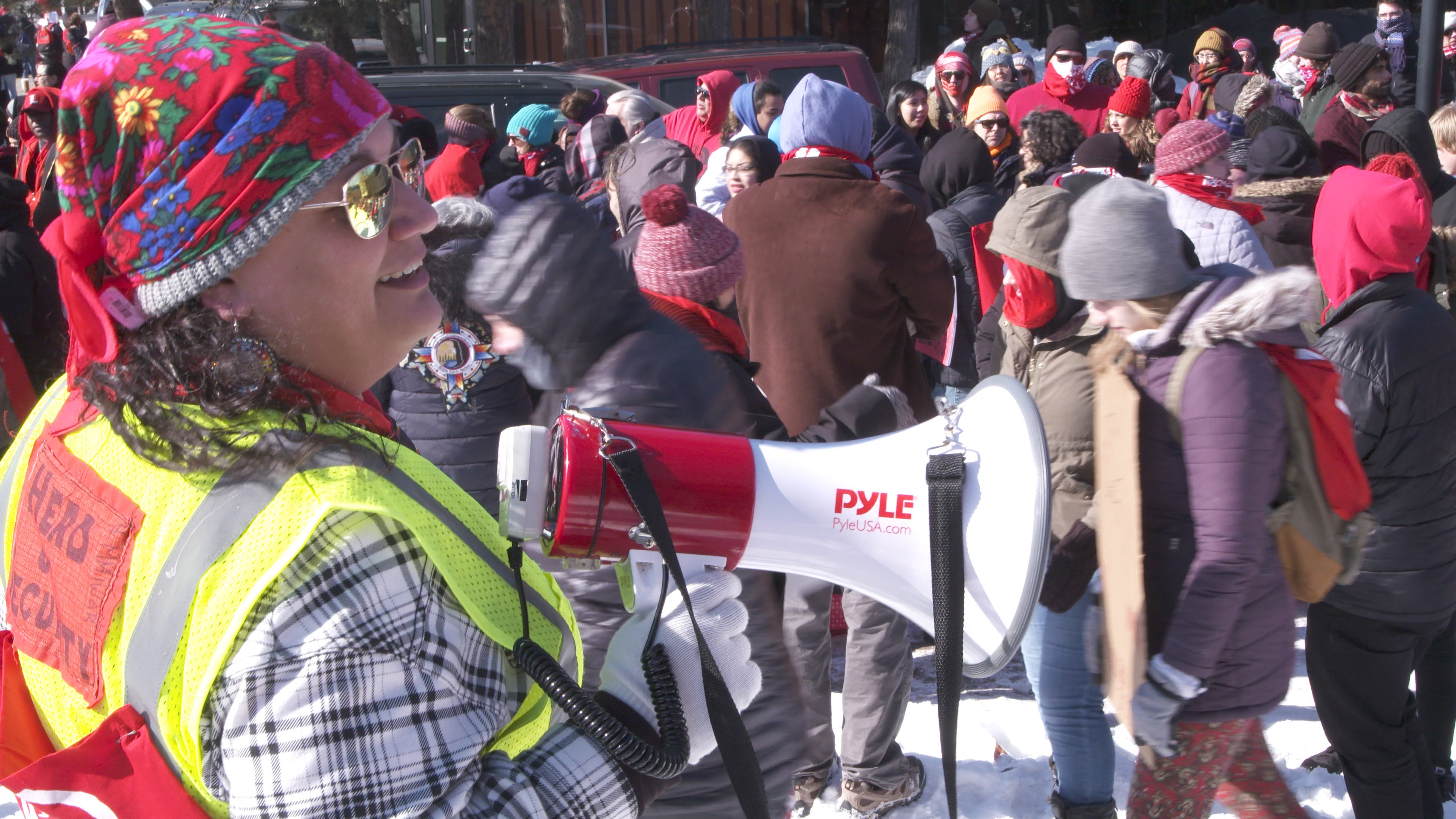
Leya Hale (Sisseton Wahpeton Dakota and Diné) currently lives in St. Paul, Minnesota. She is a storyteller, documentary filmmaker, and a producer with Twin Cities PBS. Growing up around the entertainment industry in Los Angeles, she says she “saw right away this lack of Native representation in all forms of media,” and that is what interested her in media making. Hale was raised by her father, grandparents, and extended family members. After graduating from college at the University of South Dakota, she moved back to what she considers her ancestral homeland in the state of Minnesota. “Being an urban Native person living in the city, I grew up with a strong sense of cultural identity from my family, my grandparents. Coming back here and making a living for myself and raising my family, it’s like me reclaiming my homeland again,” she says.

Leya Hale, Director of “Bring Her Home.” Courtesy photo.
Hale has won multiple regional Emmy awards for her work. She is the 2020 Merata Mita fellow at the Sundance Institute, an imagineNATIVE 2020 Native fellow, and an ambassador with Thrive’s “My Sisters are Warriors” initiative. Her latest film, “Bring Her Home,” raises awareness about the epidemic of Missing and Murdered Indigenous Women and Girls as it highlights the quests of three protagonists—artist Angela Two Stars (Sisseton Wahpeton Oyate), activist Mysti Babineau (Red Lake Nation), and North Dakota State Representative (D) Ruth Buffalo (Arikara, Hadata and Mandan)—for justice.
Native women make up less than one percent of the U.S. population, yet face murder rates more than 10 times the national average. There is a strong connection between extractivism and Missing and Murdered Indigenous Women, as well as increased severity of violence against women in correlation with mining and pipeline operations. “Our land is being extracted and raped, and then they’re extracting from us and raping us as well,” says Babineau. “This issue is common around the globe in every Indigenous community when it comes to the effects of colonization and the effects of mistreatment of our women. When a white woman goes missing in our society, you see her picture on the nightly news. It [receives] national attention. You never see awareness when a Native woman goes missing. It’s troublesome to see who our society thinks is worthy enough to investigate, to bring attention to. We see that a lot when it comes to families, when they try to report their daughters or their sisters that go missing. A lot of families don’t even call the police. They just end up having to call their own relatives and community members to go search on their own,” Hale says.
Hale started developing “Bring Her Home” after putting together a short package for the nightly news on the first annual Missing and Murdered Indigenous Women rally held in March 2015 in south Minneapolis. She says, “I felt inspired because I heard all of these different women leaders talking about what bills and policies they’re trying to bring forth to our state legislation. I heard women talking about having to go out and search on their own, talking about the mistrust of law enforcement and authorities and the lack of attention in regards to recording how many Native women go missing all the time. That number is almost unknown because there’s such a lack of data collection when somebody goes missing. They don’t even identify them as being Native women.”
Hale initially had more than 20 women from different Tribal Nations on the list of whom she wanted to film when she first started, though she ended up focusing on three. “I wanted to focus on the urban women’s experience, because the few times we get to focus on Native stories in this country, it’s always on the reservation. The few documentaries on Missing and Murdered Indigenous Women that have been produced focus on jurisdictional confusion. But there was one law that was really detrimental to solving some of these cases, and that is if a non-Native person commits a crime on a reservation, Tribal police cannot prosecute them.”
She continues, “The one issue we struggle with in the city is invisibility. When it comes to people in the city, we don’t have sovereign rights. I also wanted to show Native women as heroes and Native women that had scary incidents that either happened to them or their families. And I wanted to show that they were able to get through it and they were able to find some sense of healing to move forward and to try their best to bring attention to this because there’s so many people out there that probably have gone through similar experiences.”

Rep. Ruth Buffalo speaking at the 5th Annual Missing and Murdered Indigenous Women March, Minneapolis, MN Photo by Michael Phillips.
Hale’s film follows Ruth Buffalo in North Dakota as she engages in policy work. Among the laws that she helped enact are Savannah’s Act, named after Savannah Greywind, who was murdered in Fargo, North Dakota. The Act “helps figure out a better way for law enforcement across the country to work together to make sure that they’re tracking these cases accurately.” Buffalo is also working on combatting sex trafficking of Native women who are homeless or otherwise vulnerable, and making sure that law enforcement “knows the history of Native Peoples, historical trauma, and all of that extra weight that we have to carry as Indigenous Peoples.”

Angela Two Stars, Sisseton Wahpeton Reservation, SD Photo by Michael Phillips.
Angela Two Stars is an artist whom Hale says is helping with the visibility and representation of Native Peoples in film. “There is this long history of Native people in cinema always coming in with bow and arrow and stereotypical scenes where we’re raping white women, what they call the ‘bloodthirsty savage.’ There’s always been this image of Native women in Hollywood films of us being sexualized, exotic, promiscuous, and seen as belonging to men. This lack of true Native representation of us is in all forms of mainstream media,” Hale says. Representation matters, and there is a need to show how women are truly seen in Native communities.
“Before colonization, before white settlers came and settled on our homeland, a lot of Tribal groups in North America were matriarchal. Native women were very influential and important in the community. They were the decision makers. They were well protected and revered. The patriarchal views of white Europeans, they had a whole different mindset where the woman wasn’t important. And that way of thinking eventually infiltrated into our own communities, where our own men view them that way. So sometimes a lot of these violent acts that happen to Native women are coming from our own men, because we lost our original teachings when it comes to the importance of Native women and the importance of treating Native women the same as how you should treat the land, with love and respect, caring for it and nurturing it. In a lot of our Tribal groups, we believe women are life givers. When we talk about the Earth, we call her Mother Earth. She creates life, she creates the food we eat, the water we drink. We see that connection in a lot of our teachings.”

Mysti Babineau, Head of Security at 5th Annual Missing and Murdered Indigenous Women March, Minneapolis, MN Photo by Anna Jean Williams.
The film also highlights the work of activist Mysti Babineau, an organizer with climate change organization Minnesota 350 and an advocate for Missing and Murdered Indigenous People. Babineau has been vocal about the connection between the Line 3 pipeline and Missing and Murdered Indigenous Women. A history of objectification and dehumanization of Indigenous women has led to an increase in violence against Native American women and sex trafficking in construction site areas, which bring an influx of workers living in “man camps,” or temporary housing, near reservations. Indigenous organizers have been calling out the extractive industry for the violence, rape, and violation of land, as well as Indigenous women.
Hale believes that Indigenous media makers have an important role to play in addressing these injustices. “As Indigenous filmmakers, we need to see ourselves in success,” she says. “We need to create our own heroes. We need to create our own stories that will uplift us. Because this issue of Missing and Murdered Indigenous women is not going to be solved tomorrow. It takes time to make change. If we’re making change now, we may not see [the effects] tomorrow. It may be way better for our children and our grandchildren and the next generations to come, [but] it starts now in the home with how you treat your wife, your mother, your sisters. Missing and Murdered Indigenous Women is gender violence, and we are just finding ways to speak out, to find ways to start this conversation.”
